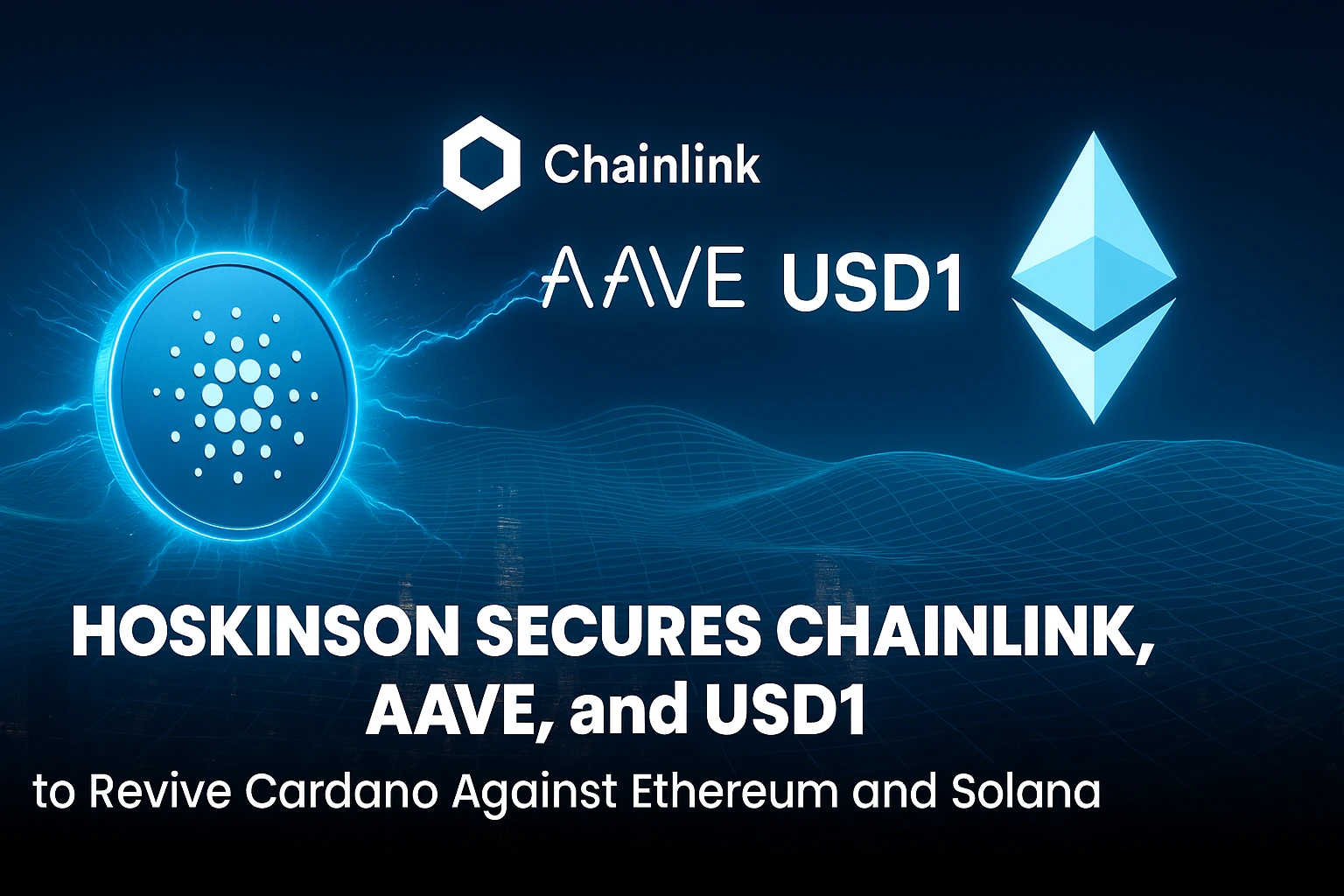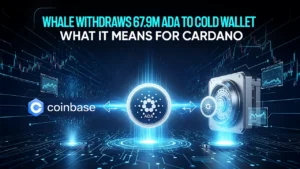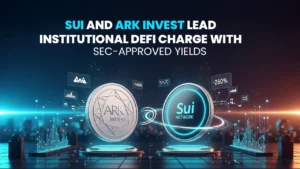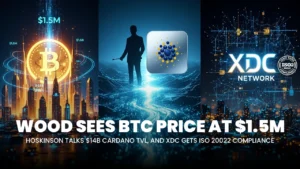Cardano’s Hoskinson Secures Chainlink, Aave and USD1 to Revive ADA Against Ethereum and Solana

On August 31, 2025, during a live Ask-Me-Anything session, Cardano founder Charles Hoskinson outlined a plan to pull Cardano’s lagging DeFi ecosystem back into relevance. He pointed to three names; Chainlink, Aave, and USD1 stablecoin as critical pieces of infrastructure the blockchain currently lacks.
- The Ambitious Roadmap: Partnerships Underway
- USD1 Stablecoin Talks Gain Traction
- Chainlink as the Missing Oracle Layer
- Aave and the Lending Opportunity
- Market Impact and ADA’s Price Performance
- Immediate Price Stability Around $0.82
- Volume and Holder Behavior
- Why Stablecoins Are Central to Cardano’s Strategy
- Oracle Wars: Competing for Institutional Relevance
- Lending Gap: The Missing DeFi Pillar
- Global Comparisons with Rival Blockchains
- Ethereum and Solana Benchmarks
- Where Cardano Stands Today
- Governance and Delegation Under Pressure
- Community Reactions: Divided but Vocal
- Reddit Commentary
- Twitter and Social Media Buzz
- Institutional Angle and Regulatory Implications
- Technical Complexity and Cost Considerations
- Long-Term Outlook for ADA Holders
- Conclusion
- Frequently Asked Questions About Cardano DeFi Partnerships
- What partnerships is Cardano pursuing?
- Why is USD1 important?
- How would Chainlink integration help?
- What benefits would Aave bring?
- How has ADA’s market reacted?
- How does this relate to Cardano’s DPoS?
- How does Cardano compare to other blockchains?
- What risks are involved?
- Who is leading talks with USD1?
- Are these deals finalized?
- Glossary of Key Terms
“I’d like USD-1, I’d like Aave, I’d like Chainlink. There’s a bundle there, and we’re working our way through what that means and how to do it,” Hoskinson told viewers. His comments mark the most direct acknowledgment yet that Cardano’s decentralized finance environment is falling short compared with rival blockchains.
For a network built on a Delegated Proof of Stake (DPoS) model, like Cardano, these integrations carry added weight, since they could expand staking utility, strengthen governance participation, and drive more transactions through validator pools.
The Ambitious Roadmap: Partnerships Underway
USD1 Stablecoin Talks Gain Traction
Hoskinson revealed that IOG Chief of Staff J.J. Siler has been in direct discussions with World Liberty Financial’s CEO Zach Witkoff to integrate USD1 into Cardano.
USD1 already ranks as one of the top six stablecoins with roughly $2.7 billion in circulation. It has secured listings on Ethereum, BNB Chain, and Tron, where it has seen rapid adoption on Binance and Bullish exchanges.
Cardano’s DeFi activity currently sits at only $31 million in stablecoin volume, ranking it 46th among blockchains. The arrival of USD1 would mark the first time Cardano gained a large-cap, institutionally adopted stablecoin, potentially transforming liquidity conditions across its trading pairs.
ALSO READ: Grayscale Submits Amended S-1 For Cardano ETF To NYSE Arca As Approval Odds Hit 87%
Chainlink as the Missing Oracle Layer
Hoskinson was equally candid about Chainlink, the industry’s dominant decentralized oracle provider. He admitted that Cardano has struggled for years without reliable oracle infrastructure. U.S. government agencies bypassed Cardano for data feeds in part because Chainlink and Pyth were not available on the network.
While Hoskinson described Chainlink’s commercial terms as “absurd,” he stressed that Cardano will pursue integration regardless, citing the long-term importance. Chainlink’s role in securing data for lending, derivatives, and insurance protocols makes it an indispensable building block for any DeFi ecosystem.
Aave and the Lending Opportunity
Hoskinson also identified Aave, the largest decentralized lending platform by total value locked, as a key target. With more than $40 billion in assets across Ethereum, Polygon, and other chains, Aave could deliver immediate liquidity depth and lending markets to Cardano.
Cardano’s current DeFi lacks a flagship lending protocol. An Aave deployment would allow ADA holders and stakers to borrow against collateral, generate yield, and expand use cases for ADA beyond simple staking.
ALSO READ: Tron Cuts Fees by 60% to Spur Usage, Generates $58M in August Revenues
Market Impact and ADA’s Price Performance
Immediate Price Stability Around $0.82
In the days following Hoskinson’s AMA, ADA’s price held steady at roughly $0.82–0.83. Analysts noted that while no speculative spike occurred, the market appeared reassured by Hoskinson’s direct acknowledgment of Cardano’s DeFi challenges and his concrete plan to fix them.
Volume and Holder Behavior
Data from on-chain analytics shows that long-term ADA holders have continued to accumulate during 2025. Despite ETF speculation and broader market rallies, these holders are not selling into strength. This contrasts with short-term traders, whose volumes remain flat.
| Metric | Observation |
| ADA Price | $0.82–0.83, stable post-announcement |
| Technical Levels | $0.88 resistance, $0.82 support |
| Holder Behavior | Long-term accumulation continues |
| Trading Volume | No significant spike observed |
Why Stablecoins Are Central to Cardano’s Strategy
Stablecoins are now the beating heart of DeFi. In 2024 alone, stablecoin settlements surpassed $27 trillion, exceeding Visa and Mastercard combined. Ethereum and Tron dominate stablecoin issuance, commanding billions in liquidity.
Cardano’s absence of a major stablecoin has left its DeFi ecosystem underdeveloped. By onboarding USD1, Cardano could finally support institutional trading, lending collateral, and payments; core pillars of modern blockchain finance. For ADA’s Delegated Proof of Stake participants, this translates into more transactions, higher staking yields, and deeper governance engagement.
Oracle Wars: Competing for Institutional Relevance
The lack of oracle infrastructure has kept Cardano sidelined in key enterprise opportunities. Chainlink already powers decentralized insurance, derivatives, and payment networks on Ethereum and Solana. Its partnership with the U.S. Department of Commerce highlights its credibility at the institutional level.
Hoskinson’s criticism of Chainlink’s “absurd” demands underscores both the cost and strategic necessity of this integration. Without Chainlink, Cardano risks being overlooked for government and corporate adoption. With it, the network gains a trusted oracle backbone that expands its scope far beyond retail DeFi.
Lending Gap: The Missing DeFi Pillar
Globally, lending remains one of the largest categories in DeFi. Aave alone accounts for more than $40 billion in locked assets. By comparison, Cardano’s entire DeFi TVL is less than $400 million.
Integrating Aave could instantly elevate Cardano’s standing. Borrowing, collateralization, and leveraged yield strategies all absent on Cardano today would come online. That, in turn, would attract liquidity providers, institutional lenders, and retail users seeking yield.
ALSO READ: 21Shares Files For SEI ETF with Staking Option as SEC Considers Altcoin Approvals
Global Comparisons with Rival Blockchains
Ethereum and Solana Benchmarks
Ethereum remains the clear leader, with more than $30 billion in DeFi TVL, multiple stablecoins above $1 billion, and Chainlink oracles embedded into nearly every major protocol. Solana, despite network outages in prior years, has rebounded with strong stablecoin growth and lending depth.
Where Cardano Stands Today
Cardano’s less than $400 million TVL and thin stablecoin usage illustrate its uphill battle. Hoskinson’s pursuit of USD1, Chainlink, and Aave is effectively an attempt to replicate the foundational components already present on rival blockchains.
Governance and Delegation Under Pressure
Cardano’s Delegated Proof of Stake (DPoS) model places governance power in the hands of ADA holders, who delegate their tokens to validators. More DeFi activity means more demand for staking, delegation, and governance decisions on treasury allocations.
USD1 integration could create stable transaction flows for validators. Aave would boost staking-linked yield opportunities. Chainlink would secure smart contract data integrity. Together, these integrations promise to reinforce DPoS participation while generating more meaningful returns for delegates.
Community Reactions: Divided but Vocal
Reddit Commentary
Hoskinson’s announcement drew mixed responses on Reddit. Some users saw the move as overdue:
“Become relevant by kissing the ring and signing up with those that already have.”
Others remained skeptical:
“I hope they pass and bury this waste of a chain.”
Twitter and Social Media Buzz
On social media platform X, Hoskinson amplified his stance with a blunt declaration:
https://twitter.com/MinswapIntern/status/1962233811179131313
https://twitter.com/IOHK_Charles/status/1962180127783256564
The tweet reinforced his personal stake in ensuring Cardano’s success, framing the integrations not as optional but as existential.
Institutional Angle and Regulatory Implications
USD1’s ties to Binance and Bullish exchange provide institutional credibility. Its integration into Cardano would signal to regulators and financial institutions that the blockchain is ready for stablecoin-driven payments and lending.
With the U.S. passing the GENIUS Act in July 2025, stablecoins now fall under a federal framework requiring strict reserves and licensing. Cardano’s move to integrate a regulated stablecoin aligns with this new legal environment and positions it to capture compliant institutional flows.
Technical Complexity and Cost Considerations
Hoskinson acknowledged that integrating Chainlink involves steep costs. He described the financial and technical demands as “absurd,” but argued that the strategic upside outweighed the expense. The negotiations highlight a broader challenge: Cardano must fund ecosystem growth at a time when treasury reserves are under scrutiny.
Earlier proposals to liquidate $100 million worth of ADA to bootstrap stablecoin liquidity were controversial. This new strategy, pursuing partnerships rather than treasury liquidation, suggests Cardano prefers external collaboration to internal sell pressure.
Long-Term Outlook for ADA Holders
For ADA holders, the integration of USD1, Aave, and Chainlink represents more than ecosystem growth. It promises deeper liquidity, greater staking opportunities, and higher governance participation. Analysts believe successful execution could shift ADA from a passive staking asset to an active DeFi utility token.
Still, execution risk remains high. Without clear timelines and firm agreements, ADA’s price response has stayed muted. But if partnerships progress into deployments, the long-term case for ADA strengthens materially.
Conclusion
Charles Hoskinson’s push to integrate USD1, Chainlink, and Aave marks a turning point for Cardano’s DeFi strategy. These partnerships address its three greatest weaknesses: the absence of a major stablecoin, the lack of oracle infrastructure, and the missing lending markets.
While ADA’s price has yet to react decisively, long-term accumulation suggests confidence among committed holders. For Cardano’s Delegated Proof of Stake ecosystem, the outcome could be transformative—more transactions, deeper governance participation, and a real chance to compete with Ethereum and Solana in DeFi.
Frequently Asked Questions About Cardano DeFi Partnerships
What partnerships is Cardano pursuing?
Cardano is negotiating integration with USD1 stablecoin, Chainlink oracle network, and Aave lending platform.
Why is USD1 important?
USD1 is a regulated stablecoin with institutional backing and $2.7 billion in circulation, which could anchor liquidity on Cardano.
How would Chainlink integration help?
Chainlink provides trusted data feeds, enabling smart contracts, DeFi, and institutional adoption.
What benefits would Aave bring?
Aave could establish lending and borrowing markets on Cardano, a key missing component of its DeFi.
How has ADA’s market reacted?
ADA remains stable around $0.82. Long-term holders are accumulating despite muted trading volumes.
How does this relate to Cardano’s DPoS?
These integrations expand staking opportunities, yield potential, and governance engagement under DPoS.
How does Cardano compare to other blockchains?
Ethereum and Solana lead in stablecoins, lending, and oracles. Cardano lags but aims to close the gap.
What risks are involved?
High integration costs, complex negotiations, and execution delays could slow adoption.
Who is leading talks with USD1?
IOG Chief of Staff J.J. Siler is negotiating with USD1’s CEO Zach Witkoff.
Are these deals finalized?
No. Hoskinson confirmed they are in active discussion, with timelines yet to be set.
Glossary of Key Terms
- ADA – Cardano’s native token.
- Stablecoin – Cryptocurrency pegged to a stable value, usually fiat.
- USD1 – Stablecoin by World Liberty Financial.
- Chainlink – Oracle provider connecting blockchains to external data.
- Aave – Decentralized lending protocol with $40B+ TVL.
- TVL – Total Value Locked, a measure of DeFi assets.
- Oracle – Data service that feeds off-chain information to smart contracts.
- Delegated Proof of Stake (DPoS) – Consensus system where token holders delegate to validators.
- Governance – Decision-making process by token holders.
- Accumulation – Investor behavior of holding assets long-term.




